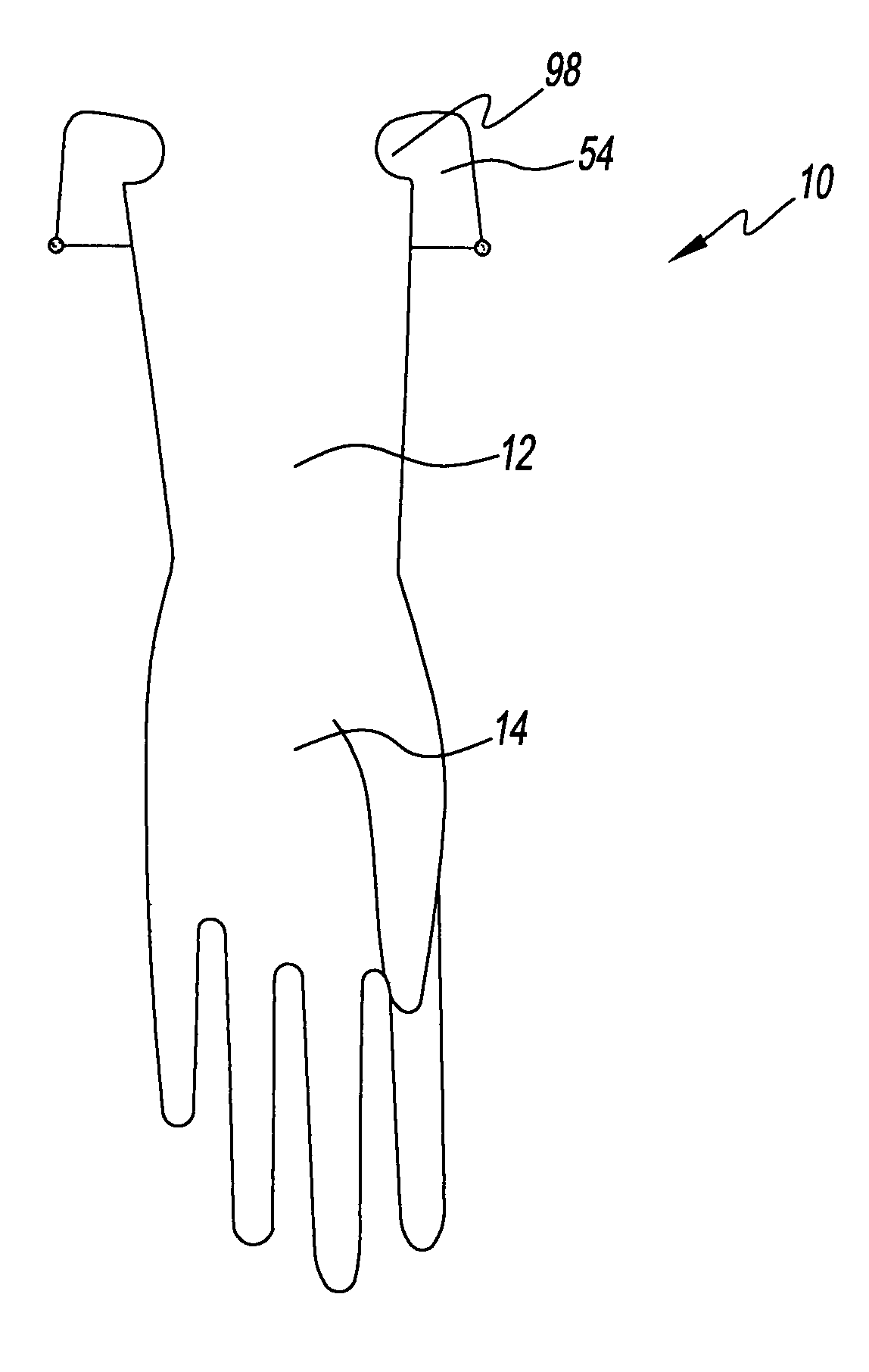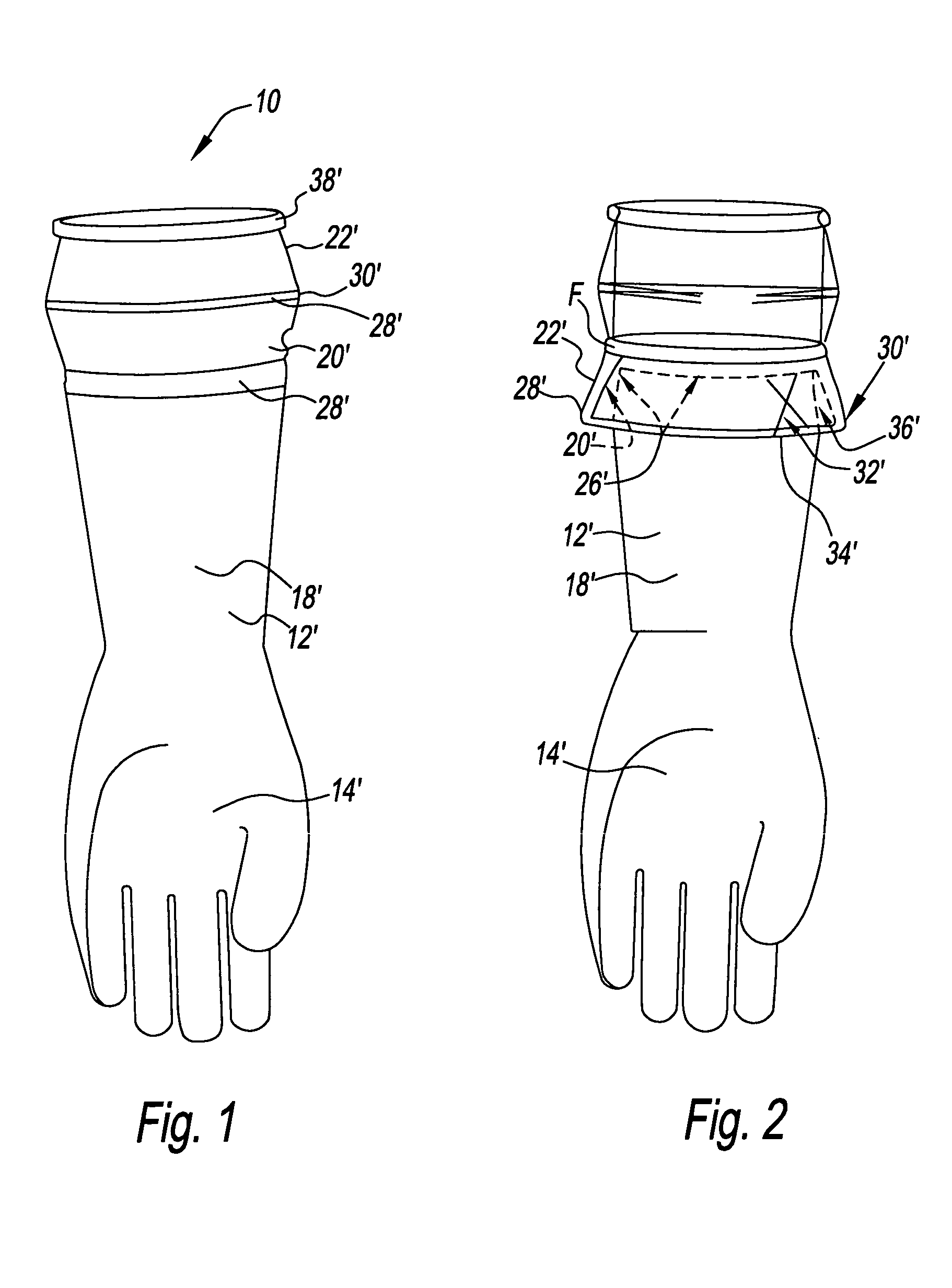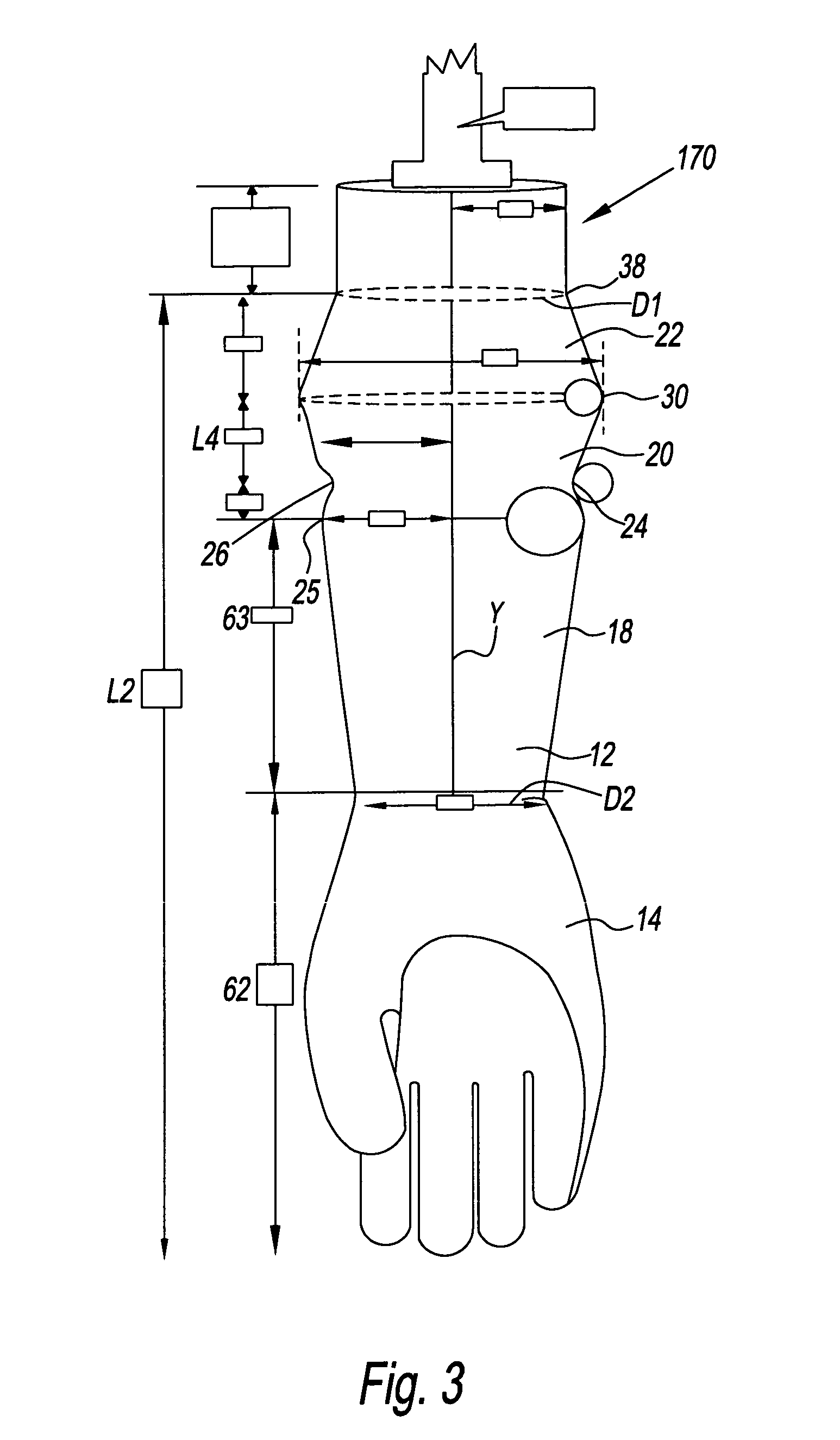Glove having a cuffed portion
a technology of cuffs and gloves, applied in gloves, clothing, clothing, etc., can solve the problems of cuffs that are difficult to maintain in cuffs, liquid escaping from the cuffs, and contact with the wearer, so as to facilitate the application and removal of the wearer, the effect of easy disengagemen
- Summary
- Abstract
- Description
- Claims
- Application Information
AI Technical Summary
Benefits of technology
Problems solved by technology
Method used
Image
Examples
fourth embodiment
[0084]the glove 10 indicates to the wearer a location where to fold the glove 10 to form the cuff portion 54. Referring to FIGS. 6 and 6A, the cuff portion 54 has a first thickness 66, and the arm covering portion 12 has a second thickness 68. Preferably in this embodiment, the second thickness 68 is greater than the first thickness 66. The difference from the first thickness 66 to the second thickness 68 is a detector. The difference gives the wearer a tactile feedback to detect a predetermined location where to fold the cuff portion 54 relative to the arm covering portion 12.
[0085]Also, the cuff portion 54 has a first arm 70 and a second arm 72. The first arm 70 and the second arm 72 both are connected to the arm covering portion 12. The first arm 70 and the second arm 72 are connected at a base 74 thereof adjacent to an opening of the glove 10. The first arm 70 is preferably disposed at an angle relative to a lateral side of the arm covering portion 12. Preferably, the angle is i...
fifth embodiment
[0086]FIG. 7 shows the cuffed portion of the glove 10 in which the first arm 72 and the second arm 74 of the cuff portion 54 are preferably substantially adjacent to the arm covering portion 12 to form the space 36 therebetween for allowing liquid to collect therein. Again, the noticeable thickness difference from the first thickness 66 to the second thickness 68 gives the wearer a tactile feedback as to the location where to fold the cuff portion 54 relative to the arm covering portion 12. Referring to FIG. 7A, the cuff portion 54 preferably is disposed at an angle relative to an outer plane that is parallel to the outer surface of the arm covering portion 12. This angle is variable and may be less than ninety degrees as shown, preferably an acute or narrow angle, less than forty-five degrees, or at about forty degrees.
sixth embodiment
[0087]FIG. 8 shows the cuffed portion of the glove 10. The glove 10 preferably has a first tubular section 78 and a second tubular section 80. Preferably, the first tubular section 78 has a first diameter 82 and is connected to the second tubular section 80. The second tubular section 80 preferably has a second diameter 84 that is greater than the first diameter 82 to form an exterior edge 86. The exterior edge 86 of the second tubular section 80 preferably extends outwardly therefrom. The exterior edge 86 obstructs liquid. In this manner, any liquid that traverses from the hand covering portion 14 will contact the exterior edge 86 of the second tubular section 80 and deflect outwardly from the glove 10. This exterior edge 86 also acts as a fold indicator to assist the wearer with a location where to fold the glove 10. The first tubular section 78 and the second tubular section 80 form an angle relative to one another. This angle can vary and be 90 degrees or higher or any angle in ...
PUM
| Property | Measurement | Unit |
|---|---|---|
| radius | aaaaa | aaaaa |
| diameter | aaaaa | aaaaa |
| length l1 | aaaaa | aaaaa |
Abstract
Description
Claims
Application Information
 Login to View More
Login to View More - R&D
- Intellectual Property
- Life Sciences
- Materials
- Tech Scout
- Unparalleled Data Quality
- Higher Quality Content
- 60% Fewer Hallucinations
Browse by: Latest US Patents, China's latest patents, Technical Efficacy Thesaurus, Application Domain, Technology Topic, Popular Technical Reports.
© 2025 PatSnap. All rights reserved.Legal|Privacy policy|Modern Slavery Act Transparency Statement|Sitemap|About US| Contact US: help@patsnap.com



